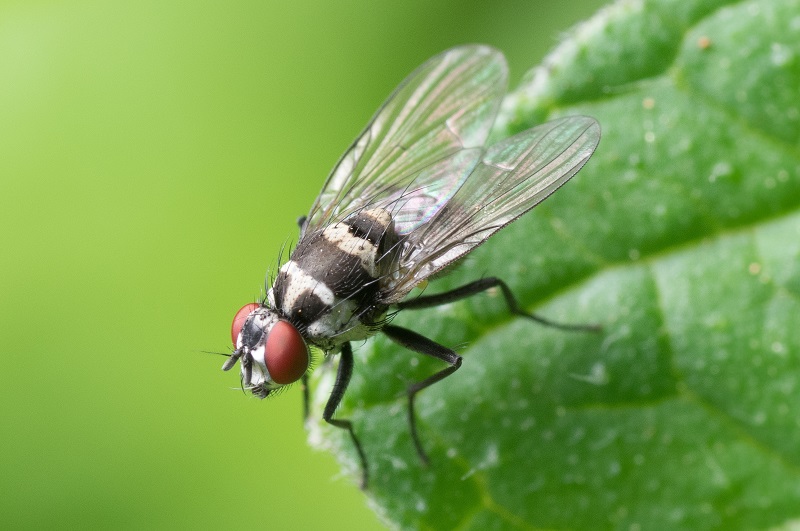Tuesdays with Tony
I love Florida Spring. The weather this past week has been absolute perfection for sunbathing in the middle of the driveway at the Clinic. I love seeing how many people I can get to drive around me by laying right in the middle. It’s a good time. Unfortunately this weather has been good for something else: flies. Now I enjoy a few flies around. They are so fun to chase, especially when they get inside, and I can run around, over, and through all the hard work my minions are doing. If I get papers to go flying it’s even better. A few flies is fun. A bunch of flies is awful, and since I live in a barn, flies can be a problem.
Luckily, I found this handy guide to flies: Full Paper. I’m going to give you the wise cat summary version here, but I highly recommend you go read the entire document! It’s full of great information about managing flies. Now is the time (in Florida anyway) to get busy managing your environment for flies. For my adoring fans in areas that are still cold, one day it will stop snowing, and this will be useful information.
Whatcha got there?
You have to start by knowing your flies. Different flies want different things in life. This means you can’t catch stable flies with the same traps you would use for house flies. Heck, you might not even have house flies. Setting out several kinds of traps, and putting them in different areas will help you see what you’ve got.
You can also spend some quality time watching your flies (and your horses) to help determine fly species buzzing around. For example, house flies like to hang out with their bodies parallel to a surface, while stable flies like to set their little fly butts down. Really learning what kind of flies you have, and watching to see which kind annoy your horses most will help you pick the right ways to kill the most flies possible. I love helping my minions observe flies. It is a great time to insist on chin scratches.
Hit ‘em where it hurts
We’re going to learn a lot about flies today. We’ve already learned that house and stable flies hang out in different locations. Now we’re going to learn about fly life cycles. Knowing how flies raise fly families helps you get rid of happy fly breeding grounds. Flies go through four stages: adult, eggs, larvae, and pupae. This gives you four separate life stages to go after! Adults are best targeted with traps (but remember you need the right trap for the kind of fly you have!).

Eggs can be difficult to target, but heat is your friend here. For larvae (ie, maggots, and who doesn’t think they’re just gross), getting rid of the environment is key. Larvae can be found in damp, protected areas. At a horse farm, the absolute prime baby fly location is in those horrendous mats of hay found around hay feeders. Other great baby rearing locales are under stall mats, especially under the water buckets, and anywhere horse manure piles up. There is a cool product called sodium bisulfate (sold as Poultry Litter Treatment) you can add to stalls, or edges of manure piles. This stuff changes the pH enough to kill the larvae without changing it so much that it’s bad for the rest of us.
Pupae can get eaten by a cool bug called a Fly Predator! These are tiny wasps that live to eat fly pupae. They can be ordered from companies like Spalding Fly Predators (https://www.spalding-labs.com). The key to fly predators is to put them out about every two weeks in the height of the season, and start them early.
Control what’s left
Ok you’ve identified your flies, the areas they hang out, you’ve got your traps, cleaned up the wet, matted hay, and put out Fly Predators. Now what? First, you will notice you have a lot fewer flies to even worry about. You may find you have few enough that you and your horse are happy, but if not, never fear: there’s fly spray. Ever felt like no fly spray works? Here’s a few fly spray tips:
- None of them last for very long. Apply them right before you really, really, need them.
- Be sure your ENTIRE horse is covered with fly spray. Best way to do this is to wipe them down. Pro tip: a sunless tanning mousse application mitt works great for this.
- EcoVet. It has a funny smell, but actually works. In testing done by Dr. Machtinger (who I stole all the information in this week’s blog from), EcoVet was the only fly spray that worked.
Remember, this is the short version of flies and horses. For even more on flies, go here: Full Paper.
Now be a good human and subscribe to my blog. You won’t regret it, and you’ll get a super special email from me once weekly.
If you’d like to hear a podcast that my team did with Dr. Machtinger about flies, click here: Flies Podcast It’s loaded with information, and takes about a half hour to listen to. You’re welcome!
Until next week,
~Tony
Tuesdays with Tony is the official blog of Tony the Clinic Cat at Springhill Equine Veterinary Clinic in Newberry, Florida. If you liked this blog, please subscribe below, and share it with your friends on social media! For more information, please call us at (352) 472-1620, visit our website at SpringhillEquine.com, or follow us on Facebook!
[jetpack_subscription_form title="Subscribe to Whinny's Wisdoms"]
